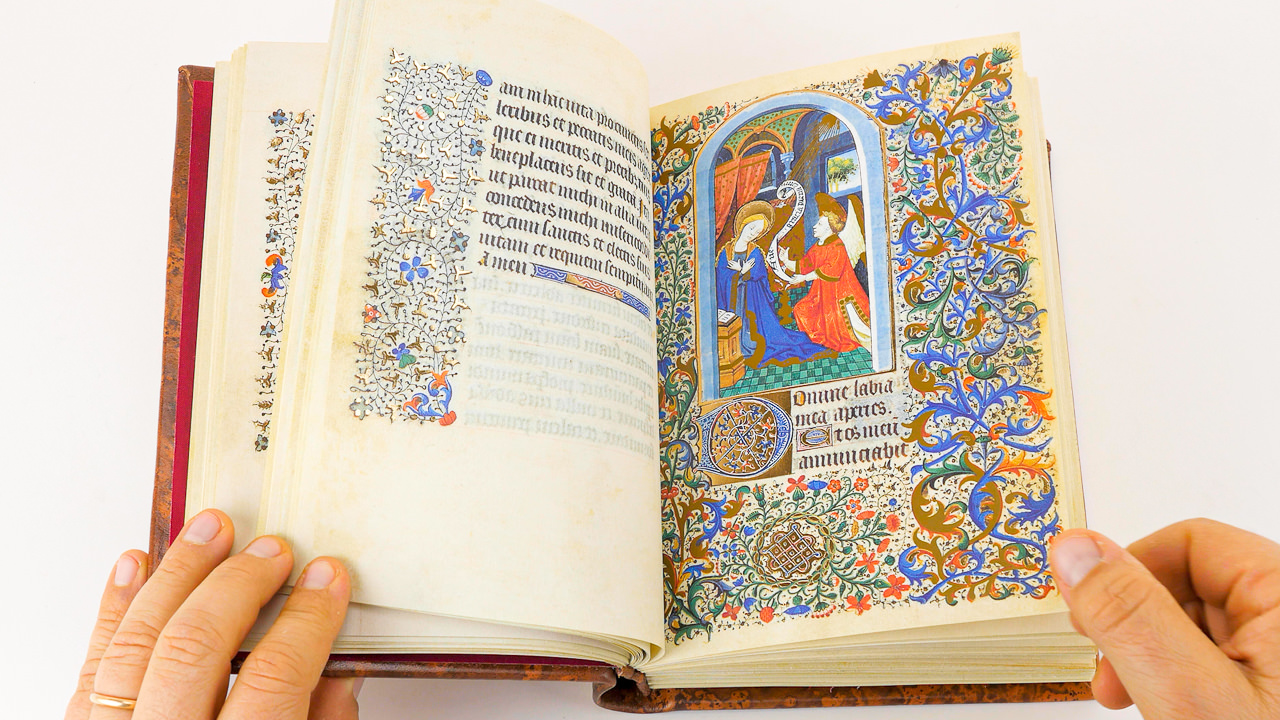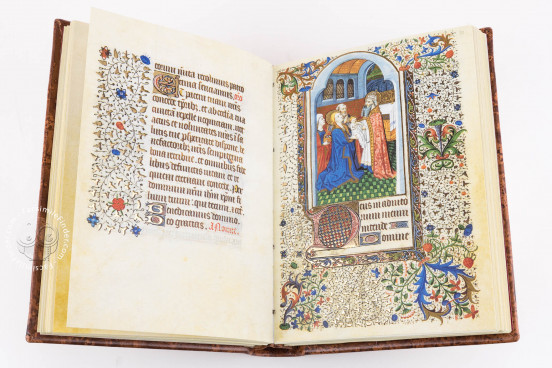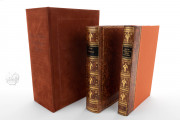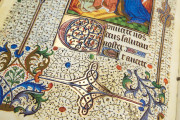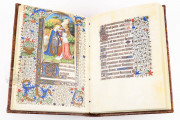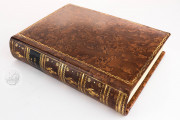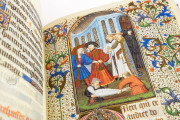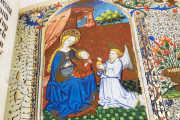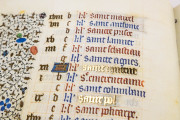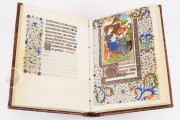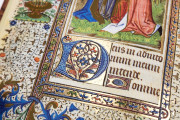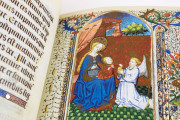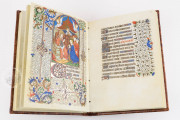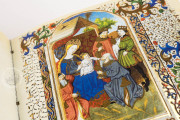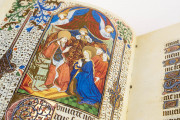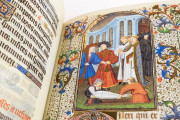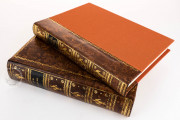Offering an intimate view into medieval private devotion, the Hours of the Weaving Virgin is a hallmark of elite fifteenth-century French illumination. In pristine condition, the manuscript was made of the finest parchment and materials. Its fifteen large miniatures are in vivid color with abundant use of gold. Borders containing elegantly winding vines adorn every single page, supplemented by lush acanthus on the pages with miniatures.
The sumptuous manuscript collects the prayers and offices that traditionally constitute a book of hours. Beginning with a calendar and Gospel pericopes, the Latin text written in Gothic Textualis includes ubiquitous prayers such as the Obsecro te and the O intermerata, the Hours of the Virgin and the Office of the Dead, the Penitential Psalms, the Hours of the Cross and of the Holy Spirit, and intercessory prayers to saints.
Made in Paris
The Hours of the Weaving Virgin was made in Paris in the middle of the fifteenth century, a time when the city boasted large networks of book artists and a bustling book trade. The three-quarter page miniatures have been attributed to two illuminators. The more accomplished one, responsible for nine miniatures, painted in an Italianizing style. The work of the less accomplished illuminator, who painted six miniatures, is mostly found toward the back of the book. This strategy of positing the very best art toward the front of a book was common at the time.
The manuscript takes its name from a miniature depicting the Virgin Mary tablet weaving that introduces seasonal variants for the prayers of the Hours of the Virgin (fol. 91r). This was undoubtedly considered a particularly important miniature, for it was trusted to the more talented of the manuscript's illuminators even though it is positioned halfway through the book.
Representations of Mary weaving or spinning yarn were not uncommon themes in Christian art. The domestic motif with apocryphal origins was, above all, a symbol of feminine virtue. Renowned for this distinguished image of weaving, the manuscript deserves close study for its great variety of meticulously detailed textiles.
Part of a Prestigious Collection
The Hours of the Weaving Virgin is in the collection of the financier and collector José Lázaro Galdiano (1862-1947). Upon his death, the Fundación Lázaro Galdiano was instituted, and his home became a museum to showcase the unparalleled treasures of European artistic heritage that Galdiano had amassed.
We have 1 facsimile edition of the manuscript "Hours of the Weaving Virgin": Libro de Horas de la Virgen Tejedora facsimile edition, published by Millennium Liber, 2002
Request Info / Price
